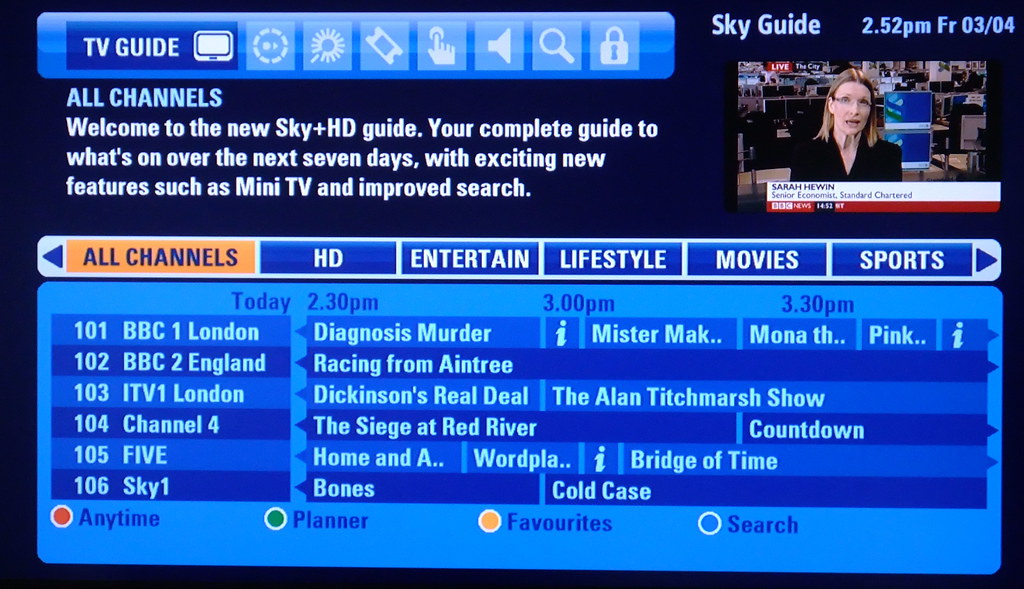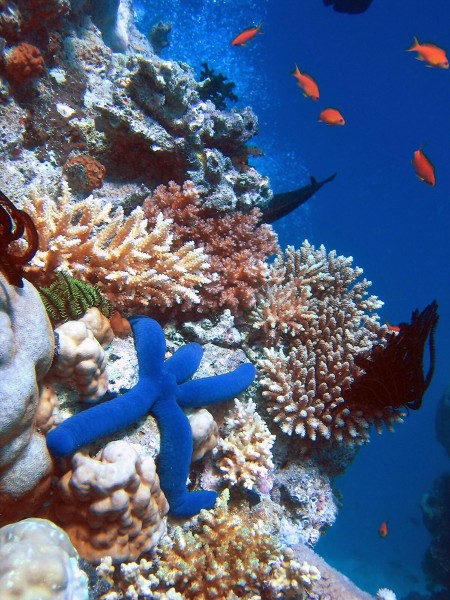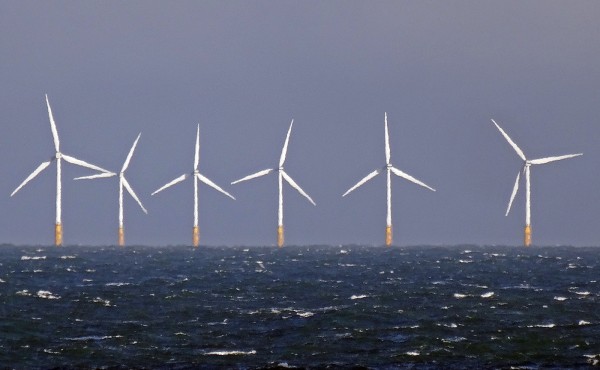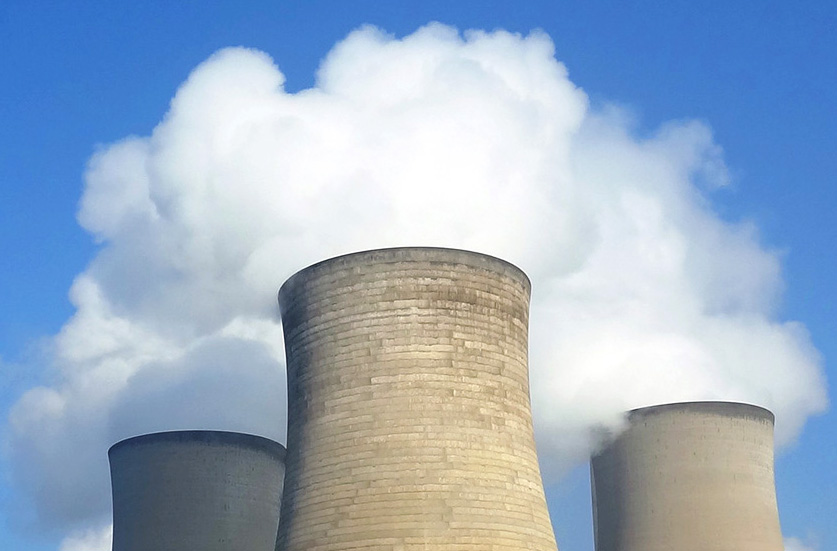 The median pay of chief executives of the FTSE 100 companies rose 11% in 2017 to £3.93 million per year, according to figures released by the High Pay Centre. By contrast, the median pay of full-time workers rose by just 2%. Given two huge pay increases for the CEOs of Persimmon and Melrose Industries of £47.1 million and £42.8 million respectively, the mean CEO pay rose even more – by 23%, from £4.58 million in 2016 to £5.66 million in 2017. This brings the ratio of the mean pay of FTSE 100 CEOs to that of their employees to 145:1. In 2000, the ratio was around 45:1.
The median pay of chief executives of the FTSE 100 companies rose 11% in 2017 to £3.93 million per year, according to figures released by the High Pay Centre. By contrast, the median pay of full-time workers rose by just 2%. Given two huge pay increases for the CEOs of Persimmon and Melrose Industries of £47.1 million and £42.8 million respectively, the mean CEO pay rose even more – by 23%, from £4.58 million in 2016 to £5.66 million in 2017. This brings the ratio of the mean pay of FTSE 100 CEOs to that of their employees to 145:1. In 2000, the ratio was around 45:1.
These huge pay increases are despite criticisms from shareholders and the government over excessive boardroom pay awards and the desire for more transparency. In fact, under new legislation, companies with more than 250 employees must publish the ratio of the CEO’s total remuneration to the full-time equivalent pay of their UK employees on the 25th, 50th (median) and 75th percentiles. The annual figures will be for pay starting from the financial year beginning in 2019, which for most companies would mean the year from April 2019 to April 2020. Such a system has been introduced in the USA this year.
So why has the gap in pay widened so much? One reason is that there is no formal mechanism whereby workers can apply downward pressure on such awards. Although Theresa May, in her campaign to become Prime Minister in 2016, promised to put workers on company boards, the government has since abandoned the idea.
 Executive pay is awarded by remuneration committees. Membership of such committees consists of independent non-executive directors, but their degree of independence has frequently been called into question and there has been much criticism of such committees being influenced by their highest paying competitors or peers. This has had the effect of ratcheting up executive pay.
Executive pay is awarded by remuneration committees. Membership of such committees consists of independent non-executive directors, but their degree of independence has frequently been called into question and there has been much criticism of such committees being influenced by their highest paying competitors or peers. This has had the effect of ratcheting up executive pay.
Then there is the question of the non-salary element in executive pay. The incentive and bonus payments are often linked to the short-term performance of the company, as reflected in, for example, the company’s share price. In a period when share prices in general rise rapidly – as we have seen over the past two years – executive pay tends to rise rapidly too. A frequent criticism of large UK businesses is that they have been too short-termist. What is more, bonuses are often paid despite poor performance.
There has been some move in recent years to make incentive pay linked more to long-term performance, but this has still led to many CEOs getting large pay increases despite lack-lustre long-term performance.
Then there is the question of shareholders and their influence on executive pay. Despite protests by many smaller shareholders, a large proportion of shares are owned by investment funds and their managers are often only too happy to vote through large executive pay increases at shareholder meetings.
So, while the pressures for containing the rise in executive pay remain small, the pay gap is likely to continue to widen. This raises the whole question of a society becoming increasingly divided between the few at the top and a large number of people ‘just getting by’ – or not even that. Will this make society even more fractured and ill at ease with itself?
Articles
Information and data
Questions
- How would you set about establishing whether CEOs’ pay is related to their marginal revenue product?
- To what extent is executive pay a reflection of oligopolistic/oligopsonistic behaviour?
- In what ways can game theory shed light on the process of setting the remuneration packages of CEOs? Is there a Nash equilibrium?
- What are the advantages and disadvantages of linking senior executives’ remuneration to (a) short-term company performance; (b) long-term company performance?
- What is/are the best indicator(s) of long-term company performance for determining the worth of senior executives?
- Consider the arguments for and against capping the ratio of CEOs’ remuneration to a particular ratio of either the mean or median pay of employees. What particular ratio might be worth considering for such a cap?
 Together with Formula 1, tennis is the other sport I love – and my favourite player by far is Rafa!
Together with Formula 1, tennis is the other sport I love – and my favourite player by far is Rafa!
We often apply game theory to various sports and consider how players, teams and individuals can think strategically. One of the big debates in tennis is ‘who is the best ever’ and I argue that Nadal is the greatest, based on a huge range of metrics.
I saw this article in the Economist, providing analysis and comparison between some of the best tennis players. It shows how we can use economic thinking, probability, game theory and analysis to come to something of an answer about who is the greatest, considering the various players’ runs to the title in the Grand Slams. Of course the reason I’m posting this is because according to the Economist, Rafa is the best! And the reasoning is very sound. Enjoy. I certainly did.
Sorry Roger: Rafael Nadal is not just the King of Clay The Economist (13/09/17)
Questions
- What is game theory and why is it useful?
- How does the rating system aim to measure the skill of a tennis champion?
- In this particular scenario, why is it important to use probabilities?
- We can use game theory to think about penalty shoot outs and whether footballers play to the Nash equilibrium. Can we also use the Nash equilibrium when thinking about tennis? (Think about the serve!)
 As an avid sport’s fan, Sky Sports and Eurosport are must haves for me! In the days leading up to the end of January, it was a rather tense time in my house with the prospect of Eurosport being removed from anyone who was a Sky TV subscriber. Thankfully the threat has now gone and tranquility returns, but what was going on behind the scenes?
As an avid sport’s fan, Sky Sports and Eurosport are must haves for me! In the days leading up to the end of January, it was a rather tense time in my house with the prospect of Eurosport being removed from anyone who was a Sky TV subscriber. Thankfully the threat has now gone and tranquility returns, but what was going on behind the scenes?
Whether you have Sky TV, BT, Virgin or any other, we generally take it for granted that we can pick and choose the channels we want, pay our subscription to our provider and happily watch our favourite shows. However, behind the scenes there is a web of deals. While Sky own many channels, such as Sky Sports; BT own others and there are a range of other companies that own the rest. Some companies pay Sky for their channels to be shown, while Sky pays other companies for access to their channels.
One such company is Discovery, which owns a range of channels including TLC, Eurosport, DMAX and Animal planet. Discovery then sells these channels to providers, such as Sky and Virgin, who pay a price for access. The problem was that Sky and Discovery had failed to reach an agreement for these channels and as the deadline of 31st January 2017 loomed, it became increasingly possible that Discovery would simply remove its channels from Sky. This would mean that Sky customers would no longer have access to these channels, while customers with other providers would continue to watch them, as companies such as Virgin still had an agreement in place.
 The issue was money. Hours before the deadline, a deal was finally reached such that Discovery will now keep its programmes on Sky for ‘years to come’. Discovery has indicated the final deal was better than had originally been proposed, while Sky indicate that the deal accepted by Discovery was the same as had previously been offered! Although no details of the financial agreement have been released, it seems likely that either Sky increased the price they were willing to pay or Discovery lowered the price it was asking for. Both companies stood to lose if the dispute was not settled, but it’s interesting to consider which company was at more risk. Following the announcement that a deal had been struck, Discovery shares rose by 2.5 per cent, while Sky’s share remained unchanged.
The issue was money. Hours before the deadline, a deal was finally reached such that Discovery will now keep its programmes on Sky for ‘years to come’. Discovery has indicated the final deal was better than had originally been proposed, while Sky indicate that the deal accepted by Discovery was the same as had previously been offered! Although no details of the financial agreement have been released, it seems likely that either Sky increased the price they were willing to pay or Discovery lowered the price it was asking for. Both companies stood to lose if the dispute was not settled, but it’s interesting to consider which company was at more risk. Following the announcement that a deal had been struck, Discovery shares rose by 2.5 per cent, while Sky’s share remained unchanged.
While Sky said that viewing figures on Discovery’s channels had been falling and that it had been over-paying for years, it seems likely that if a deal had not been reached, millions of Sky customers may have considered switching to other providers, who were still able to show Discovery channels. Although Sky has been looking to cut its costs and one way is to cut the price it pays for channels, failure to reach an agreement may have cost it a significant sum in lost revenue, as channels such as Eurosport are hugely popular.
Discovery claimed that the price Sky was paying them was not fair and that it was paying them less for its channels that it did 10 years ago. Susanna Dinnage, Discovery’s Managing Director in the UK said:
“We believe Sky is using what we consider to be its dominant market position to further its own commercial interest over those of viewers and independent broadcasters. The vitality of independent broadcasters like Discovery and plurality in TV is under threat.”
 Sky claimed that Discovery was demanding close to £1bn for its programmes and that given that these channels were losing viewers, this price was unrealistic. A spokesman said:
Sky claimed that Discovery was demanding close to £1bn for its programmes and that given that these channels were losing viewers, this price was unrealistic. A spokesman said:
“Despite our best efforts to reach a sensible agreement, we, like many other platforms and broadcasters across Europe, have found the price expectations for the Discovery portfolio to be completely unrealistic. Discovery’s portfolio of channels includes many which are linear-only where viewing is falling …
Sky has a strong track record of understanding the value of the content we acquire on behalf of our customers, and as a result we’ve taken the decision not to renew this contract on the terms offered …
We have been overpaying Discovery for years and are not going to anymore. We will now move to redeploy the same amount of money into content we know our customers value.”
Here we have a classic case of two firms in negotiation; each with a lot to lose, but both wanting the best outcome. There are hundreds of channels with millions of programmes and hence it is a competitive market. So why was it that Discovery could pose such a threat to the huge broadcaster? The following articles consider the dispute and the eleventh hour agreement.
Discovery strikes deal to keep channels on Sky BBC News (1/2/17)
Discovery channel strikes last-minute deal with Sky to stay on TV, saving Animal Planet and Eurosport Independent, Aatif Sulleyman (1/2/17)
Eurosport stays o Sky after late deal is struck with hours to spare between broadcasting giant and Discovery Mail Online, Kieran Gill (1/2/17)
Discovery averts UK blackout with Sky in last-minute deal Bloomberg, Rebecca Penty, Joe Mayes and Gerry Smith (1/2/17)
Is Sky losing Discovery? Eurosport, Animal Planet and other fan favourite set to stay International Business Times, Owen Hughes (1/2/17)
Discovery goes to war with Sky over channel fees with blackout threat The Telegraph, Christopher Williams (25/1/17)
Questions
- Can you use game theory to outline the ‘game’ that Sky and Discovery were playing?
- Is the ‘threat’ of stopping access to channels credible?
- Although we don’t know the final financial settlement, why would Sky have had a reason to increase the price it paid to Discovery?
- Why would it be in Discovery’s interests to accept the deal that Sky offered?
- Susanna Dinnage suggested that Sky was using its dominant market position. What does this mean and how does this suggest that Sky might be able to behave?
- What type of market structure is the pay-TV industry? Think about it in terms of broadcasters, channels and programmes as you might get very different answers!
 Australia held a general election on 2 July 2016. The Liberal/National coalition narrowly won in the House of Representatives, gaining a substantially reduced majority of 77 of the 150 seats, to Labor’s 68 and other parties’ 5 seats. One campaign issue for all parties was the destruction of the Great Barrier Reef, which is seen as an environmental disaster. Each party had proposals for tackling the problem and we examine some of them here.
Australia held a general election on 2 July 2016. The Liberal/National coalition narrowly won in the House of Representatives, gaining a substantially reduced majority of 77 of the 150 seats, to Labor’s 68 and other parties’ 5 seats. One campaign issue for all parties was the destruction of the Great Barrier Reef, which is seen as an environmental disaster. Each party had proposals for tackling the problem and we examine some of them here.
The Great Barrier Reef is the largest coral reef in the world. As the BBC’s iWonder guide states:
One of the world’s seven natural wonders, the Great Barrier Reef contains some 900 islands and 3000 smaller reefs. It is larger than the UK, the Netherlands and Switzerland combined, home to around 10% of the world’s marine fish, over 200 bird species and countless other animals, including turtles and dolphins.
But this iconic Reef system is facing unprecedented threats. Together with governments, scientists are playing a key role in the battle to preserve this vulnerable ecosystem before it’s too late.
The Reef is 2300km long. In the northern third, around half of the coral is dead. Few tourists see this, as they tend to dive in the southern third, which, being cooler, is less affected.
The bleaching and destruction of coral reefs has a number of causes. These include: rising water temperatures, generally from global warming and more extreme El Niño events (rising warm waters that periodically spread across the Pacific); pollution, including that from coal mining, industrial effluent and run-off of pesticides, herbicides, fertilisers and sediment from farming, leading to acidification of waters; more frequent and more violent cyclones; rapidly expanding numbers of coral-eating Crown of Thorns starfish; and over fishing of some species of fish, leading to knock-on effects on ecosystems.
 The Barrier Reef and the oceans and atmosphere around it can be regarded as a common resource. The warming of the atmosphere and the oceans, and the destruction of the reef and the wildlife on it, are examples of the ‘tragedy of the commons’. With no-one owning these resources, they are likely to be overused and abused. Put another way, these activities cause negative externalities, which do not appear as costs to the polluters and despoilers, but are still costs to all who treasure the reef. And, from a non-human perspective, it is a cost to the planet and its biodiversity. What is in the private interests of the abusers is not in the social or environmental interest.
The Barrier Reef and the oceans and atmosphere around it can be regarded as a common resource. The warming of the atmosphere and the oceans, and the destruction of the reef and the wildlife on it, are examples of the ‘tragedy of the commons’. With no-one owning these resources, they are likely to be overused and abused. Put another way, these activities cause negative externalities, which do not appear as costs to the polluters and despoilers, but are still costs to all who treasure the reef. And, from a non-human perspective, it is a cost to the planet and its biodiversity. What is in the private interests of the abusers is not in the social or environmental interest.
The Australian government had sought to downplay the extent of the problem, afraid of deterring tourists – a valuable source of revenue – and under pressure from the coal and farming industries. Nevertheless, in the run-up to the election, the destruction of the Reef and what to do about it became a major debating point between the parties.
 The Coalition government has pledged A$1bn for a new Reef fund, which will be dedicated to tackling climate change and water quality.
The Coalition government has pledged A$1bn for a new Reef fund, which will be dedicated to tackling climate change and water quality.
The fund will also help coastal sewage treatment plants to reduce ocean outfalls with efficient pumps, biogas electricity generation and next-generation waste water treatment. Improving water quality will enhance the Reef’s resilience to climate change, coral bleaching and outbreaks of the destructive crown of thorns starfish.
But how much difference the fund can make with the money it will have is not clear.
The Labor Party pledged to follow every recommendation in the Great Barrier Reef Water Science Taskforce’s Final Report, released in May, and to pass laws to prevent farm pollution flowing into the waters around the Reef and to have a more rapid shift towards renewable energy.
The Green Party goes the furthest. In addition to the Labor Party’s proposals, it wants to impose taxes on coal firms equal to the cost of the damage they are causing. The tax revenues would be paid into a multi-billion dollar fund. This would then be spent on measures to rescue the Reef, invest in clean energy projects, stop damaging industrial development, improve farm management and stop polluted run-off into the Reef catchment area by investing in water systems.
Promises at the time of an election are all well and good. Just how much will be done by the re-elected Coalition government remains to be seen.
Interactive Videos and presentations
 David Attenborough’s Great Barrier Reef: an Interactive Journey, Atlantic Productions, David Attenborough (2015)
David Attenborough’s Great Barrier Reef: an Interactive Journey, Atlantic Productions, David Attenborough (2015)
 Global Warming – the greatest market failure Prezi, Yvonne Cheng (5/12/12)
Global Warming – the greatest market failure Prezi, Yvonne Cheng (5/12/12)
Articles
The Great Barrier Reef: a catastrophe laid bare The Guardian, Michael Slezak (7/6/16)
The Guardian view on the Great Barrier Reef: the crisis they prefer to downplay The Guardian (7/6/16)
Fight to save Great Barrier Reef could cost billions, secret government modelling estimates ABC News, Mark Willacy (2/6/16)
Great Barrier Reef: government must choose which parts to save, says expert The Guardian, Joshua Robertson (8/7/16)
This election, what hope is there for the Great Barrier Reef? The Guardian, Michael Slezak (1/7/16)
Coalition will protect Great Barrier Reef with $1bn fund, says PM The Guardian, Gareth Hutchens (12/6/16)
Great Barrier Reef election explainer: how do the parties compare? The Guardian, Michael Slezak (2/6/16)
Five things we can do right now to save the Great Barrier Reef The Guardian, John Pandolfi (13/6/16)
We’ve scored the parties on the Reef My Sunshine Coast, Australian Marine Conservation Society (29/6/16)
Our Most Iconic Places Are Under Dire Threat From Climate Change Huffington Post, Nick Visser (26/5/16)
There are bright spots among the world’s coral reefs – the challenge is to learn from them The Conversation, Australia, Joshua Cinner (21/7/16)
Questions
- Explain what is meant by the Tragedy of the Commons. Is all pollution damage an example of this?
- What can the Australian government do to internalise the external costs to the Great Barrier Reef from (a) farming; (b) mining; (c) global warming?
- Why is it difficult to reach international agreement on tackling climte change? What insights can game theory provide for understanding the difficulties?
- What are the recommendations in the Final Report of the Great Barrier Reef Water Science Taskforce? What mix of tools does it suggest?
- What are the relative advantages and disadvantages of taxation, laws and regulations, public investment, education and international negotiation as policy instruments to protect the Reef?
 After two weeks of negotiations between the 195 countries attending the COP21 climate change conference in Paris, a deal has been reached on tackling climate change. Although the deal still has to be ratified by countries, this is a major step forward in limiting global warming. Before it can formally come into force, it must have been ratified by at least 55 countries, accounting for at least 55% of global greenhouse gas emissions.
After two weeks of negotiations between the 195 countries attending the COP21 climate change conference in Paris, a deal has been reached on tackling climate change. Although the deal still has to be ratified by countries, this is a major step forward in limiting global warming. Before it can formally come into force, it must have been ratified by at least 55 countries, accounting for at least 55% of global greenhouse gas emissions.
The deal goes much further than previous agreements and includes the following:
- A limit on the increase in global temperatures to ‘well below’ 2°C above pre-industrial levels and efforts pursued to limit it to 1.5°C.
- A recognition that the pledges already made ahead of the conference by 186 countries and incorporated into the agreement are insufficient and will only limit global temperature rise to 2.7°C at best.
- Countries to update their emissions reductions commitments every five years – the first being in 2020. Such revised commitments should then be legally binding.
- A global ‘stocktake’ in 2023, and every five years thereafter, to monitor countries’ progress in meeting their commitments and to encourage them to make deeper cuts in emissions to reach the 1.5°C goal. This requires a process of measurement and verification of countries’ emissions.
- To reach a peak in greenhouse gas emissions as soon as possible and then to begin reducing them and to achieve a balance between sources and sinks of greenhouse gases (i.e. zero net emissions) in the second half of this century.
- Developed countries to provide the poorest developing countries with $100bn per year by 2020 to help them reduce emissions. This was agreed in Copenhagen, but will now be continued from 2020 to 2025, and by 2025 a new goal above $100bn per year will be agreed.
- The development of market mechanisms that would award tradable credits for green projects and emissions reductions.
- A recognition that the ‘loss and damage’ associated with climate-related disasters can be serious for many vulnerable developing countries (such as low-lying island states) and that this may require compensation. However, there is no legal liability on developed countries to provide such compensation.
Perhaps the major achievement at the conference was a universal recognition that the problem of global warming is serious and that action needs to be taken. Mutual self interest was the driving force in reaching the agreement, and although it is less binding on countries than many would have liked, it does mark a significant step forward in tackling climate change.
But why did the conference not go further? Why, if there was general agreement that global warming should be tackled and that global temperature rise should ideally be capped at 1.5°C, was there not a binding agreement on each country to apply this cap?
There are two reasons.
First, it is very difficult to predict the exact relationship, including its timing, between emissions and global temperature rise. Even if you could make limits to emissions binding, you could not make global temperature rise binding.
 Second, even if there is general agreement about how much emissions should be reduced, there is no general agreement on the distribution of these reductions. Many countries want to do less themselves and others to do more. More specifically, poor countries want rich countries to do all the cutting while many continue to build more coal-fired power stations to provide the electricity to power economic development. The rich countries want the developing countries, especially the larger ones, such as China, India and Brazil to reduce their emissions, or at least the growth in their emissions.
Second, even if there is general agreement about how much emissions should be reduced, there is no general agreement on the distribution of these reductions. Many countries want to do less themselves and others to do more. More specifically, poor countries want rich countries to do all the cutting while many continue to build more coal-fired power stations to provide the electricity to power economic development. The rich countries want the developing countries, especially the larger ones, such as China, India and Brazil to reduce their emissions, or at least the growth in their emissions.
Then there is the difference between what countries vaguely pledge at a global conference and what they actually do domestically. Many developed countries are keen to take advantage of currently cheap fossil fuels to power economic growth. They are also still investing in alternative sources of fossil fuels, such as through fracking.
 As we said in the previous blog, game theory can shed some useful insights into the nature and outcome of climate negotiations. ‘The global optimum may be for a strong agreement, binding on all countries. The Nash equilibrium, however, may be a situation where countries push for their own interests at the expense of others, with the final agreement being much more minimalistic.’
As we said in the previous blog, game theory can shed some useful insights into the nature and outcome of climate negotiations. ‘The global optimum may be for a strong agreement, binding on all countries. The Nash equilibrium, however, may be a situation where countries push for their own interests at the expense of others, with the final agreement being much more minimalistic.’
‘Minimalistic’ may be too strong a description of the outcomes of the Paris conference. But they could have been stronger. Nevertheless, judged by the outcomes of previous climate conferences, the deal could still be described as ‘historic’.
Videos
 With landmark climate accord, world marks turn from fossil fuels Reuters (13/12/15)
With landmark climate accord, world marks turn from fossil fuels Reuters (13/12/15)
 COP21 climate change summit reaches deal in Paris BBC News (13/12/15)
COP21 climate change summit reaches deal in Paris BBC News (13/12/15)
 COP21: Paris climate deal is ‘best chance to save planet’ BBC News (13/12/15)
COP21: Paris climate deal is ‘best chance to save planet’ BBC News (13/12/15)
 COP21: Climate change deal’s winners and losers BBC News, Matt McGrath (13/12/15)
COP21: Climate change deal’s winners and losers BBC News, Matt McGrath (13/12/15)
 The Five Key Decisions Made in the UN Climate Deal in Paris Bloomberg, video: Nathaniel Bullard; article: Ewa Krukowska and Alex Morales (12/12/15)
The Five Key Decisions Made in the UN Climate Deal in Paris Bloomberg, video: Nathaniel Bullard; article: Ewa Krukowska and Alex Morales (12/12/15)
 The key factors in getting a deal in Paris BBC News on YouTube, Tom Burke (13/12/15)
The key factors in getting a deal in Paris BBC News on YouTube, Tom Burke (13/12/15)
Articles
COP21 agreement: All you need to know about Paris climate change deal Hindustan Times, Chetan Chauhan (13/12/15)
COP21: Paris agreement formally adopted Financial Times, Pilita Clark and Michael Stothard (12/12/15)
Let’s hail the Paris climate change agreement and get to work Financial Times, Jeffrey Sachs (12/12/15)
COP21: Public-private collaboration key to climate targets Financial Times, Nicholas Stern (13/12/15)
Paris climate change agreement: the deal at a glance The Telegraph, Emily Gosden (12/12/15)
Climate Accord Is a Healing Step, if Not a Cure New York Times, Justin Gillis (12/12/15)
Paris Agreement Ushers in End of the Fossil Fuel Era Slate, Eric Holthaus (12/12/15)
Paris Agreement: the reaction Business Green, James Murray and Jessica Shankleman (12/12/15)
World’s First Global Deal to Combat Climate Change Adopted in Paris Scientific American, David Biello (12/12/15)
COP21: Paris climate deal ‘our best chance to save the planet’, says Obama Independent, Tom Bawden (13/12/15)
Grand promises of Paris climate deal undermined by squalid retrenchments The Guardian, George Monbiot (12/12/15)
Paris Agreement on climate change: the good, the bad, and the ugly The Conversation, Henrik Selin and Adil Najam (14/12/15)
COP21: James Hansen, the father of climate change awareness, claims Paris agreement is a ‘fraud’ Independent, Caroline Mortimer (14/12/15)
Paris climate agreement: More hot air won’t save us from oblivion Sydney Morning Herald, Peter Hartcher (15/12/15)
Draft Agreement
Adoption of the Paris Agreement United Nations Framework Convention on Climate Change (12/12/15)
Questions
- Could the market ever lead to a reduction in greenhouse gas emissions? Explain.
- What are the main strengths and weaknesses of the Paris agreement?
- Is it in rich countries’ interests to help poorer countries to achieve reductions in greenhouse gas emissions?
- How might countries reduce the production of fossil fuels? Are they likely to want to do this? Explain.
- Is a ‘cap and trade’ (tradable permits) system (a) an effective means of reducing emissions; (b) an efficient system?
- What is the best way of financing investment in renewable energy?
 The median pay of chief executives of the FTSE 100 companies rose 11% in 2017 to £3.93 million per year, according to figures released by the High Pay Centre. By contrast, the median pay of full-time workers rose by just 2%. Given two huge pay increases for the CEOs of Persimmon and Melrose Industries of £47.1 million and £42.8 million respectively, the mean CEO pay rose even more – by 23%, from £4.58 million in 2016 to £5.66 million in 2017. This brings the ratio of the mean pay of FTSE 100 CEOs to that of their employees to 145:1. In 2000, the ratio was around 45:1.
The median pay of chief executives of the FTSE 100 companies rose 11% in 2017 to £3.93 million per year, according to figures released by the High Pay Centre. By contrast, the median pay of full-time workers rose by just 2%. Given two huge pay increases for the CEOs of Persimmon and Melrose Industries of £47.1 million and £42.8 million respectively, the mean CEO pay rose even more – by 23%, from £4.58 million in 2016 to £5.66 million in 2017. This brings the ratio of the mean pay of FTSE 100 CEOs to that of their employees to 145:1. In 2000, the ratio was around 45:1. Executive pay is awarded by remuneration committees. Membership of such committees consists of independent non-executive directors, but their degree of independence has frequently been called into question and there has been much criticism of such committees being influenced by their highest paying competitors or peers. This has had the effect of ratcheting up executive pay.
Executive pay is awarded by remuneration committees. Membership of such committees consists of independent non-executive directors, but their degree of independence has frequently been called into question and there has been much criticism of such committees being influenced by their highest paying competitors or peers. This has had the effect of ratcheting up executive pay.









